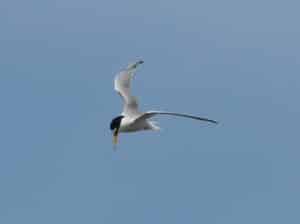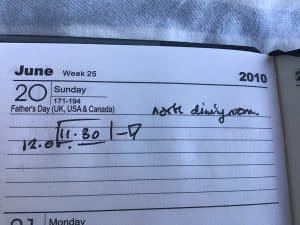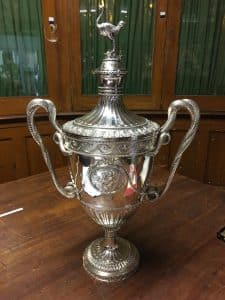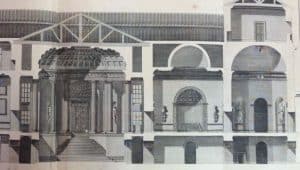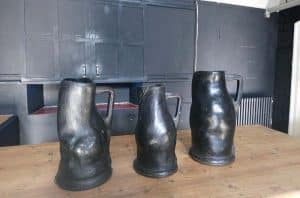Family Fortunes – Portraits by Andrea Casali
June 15, 2020 | Holkhome | 4 minute read
In 1758, Thomas Coke, 1st Earl of Leicester (1697-1759) invited the Italian artist, Andrea Casali (1705-1784) to come to Holkham in order to execute a commission for a series of paintings depicting the Coke Family. The series painted by Casali totalled nine full length portraits, and two head and shoulders portrait, for which he was paid the sum of £300.
What was interesting about this commission, however, was that for only two of the portraits were the sitters still living – Thomas Coke and his wife Margaret, both depicted in their Coronation Robes, commemorating Thomas’ elevation to the rank of Earl in 1744.
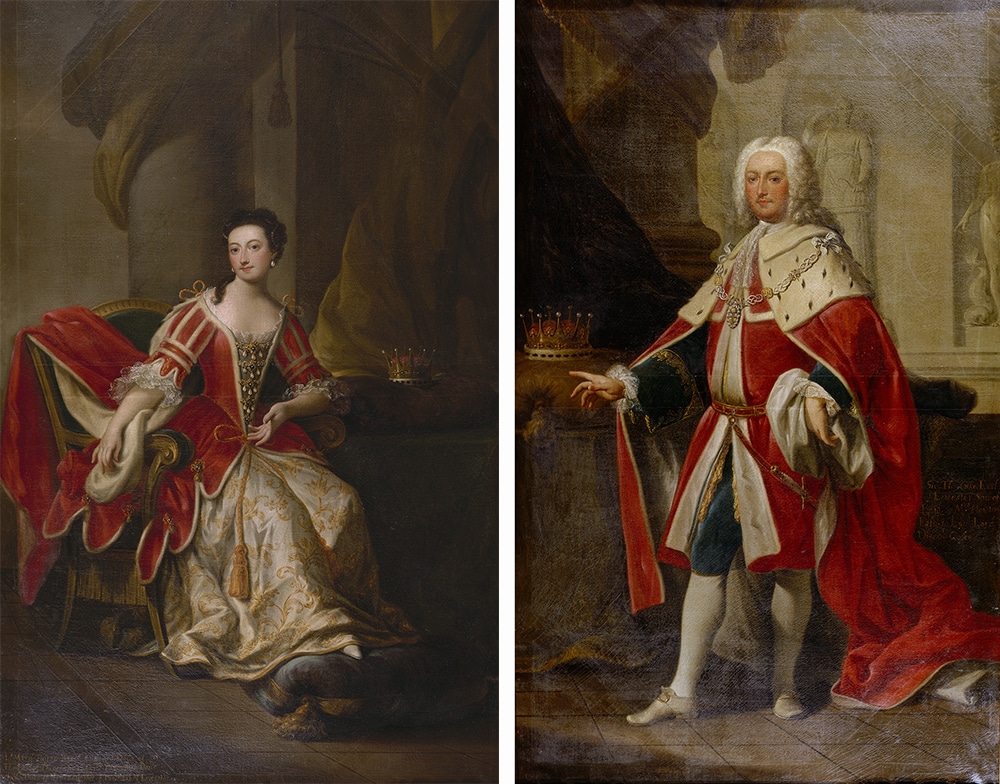
Thomas Coke and his wife Margaret, by Casali
One other portrait depicted Thomas and Margaret’s son, Edward, Viscount Coke, who had died in 1753. This particularly poignant commission shows Edward with Holkham behind him, hinting at an inheritance that would never come to pass. The likeness for this portrait was likely taken from a pastel portrait of Viscount Coke by the celebrated female artist Rosalba Carriera.
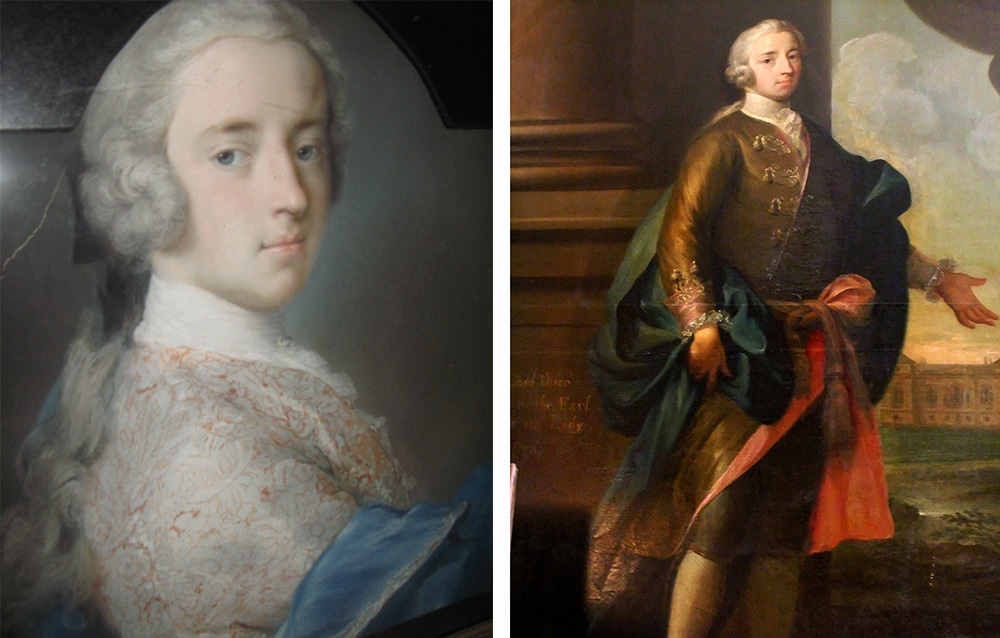
Viscount Coke by Rosalba Carriera (left) and Casali’s portrait (right)
The remaining portraits all depict ancestors of Thomas Coke – his grandfather, Robert Coke (d.1679); his great-grandfather, Richard Coke (d.1669) and great-grandmother Mary Rouse; his great-great grandfather, Henry Coke (d.1661) and great-great grandmother Margaret Lovelace (d.1656); and his great-great-great grandmother Bridget Paston, first wife of the celebrated English jurist Sir Edward Coke.
These paintings were demonstrating the ancestral pedigree of Thomas Coke, and it is no coincidence they have been hung ever since their completion in the entrance to Strangers’ Wing, so that all who came to stay could appreciate the ancient line of the Coke family. Establishing this pedigree was all the more important as Thomas Coke had only become ennobled in his lifetime, first as Baron Lovell in 1728, and then later as Earl of Leicester.
But how was Casali able to paint these portraits?
For some of the sitters, Casali was able to copy their facial features from family miniatures, still in the collection today. A miniature of Mary Rouse, painted by a member of the circle of Cornelius Janssen van Ceulen (1593-1661) is almost identical to her portrait by Casali, though he has painted her in a blue dress, as opposed to the orange one shown in the miniature.
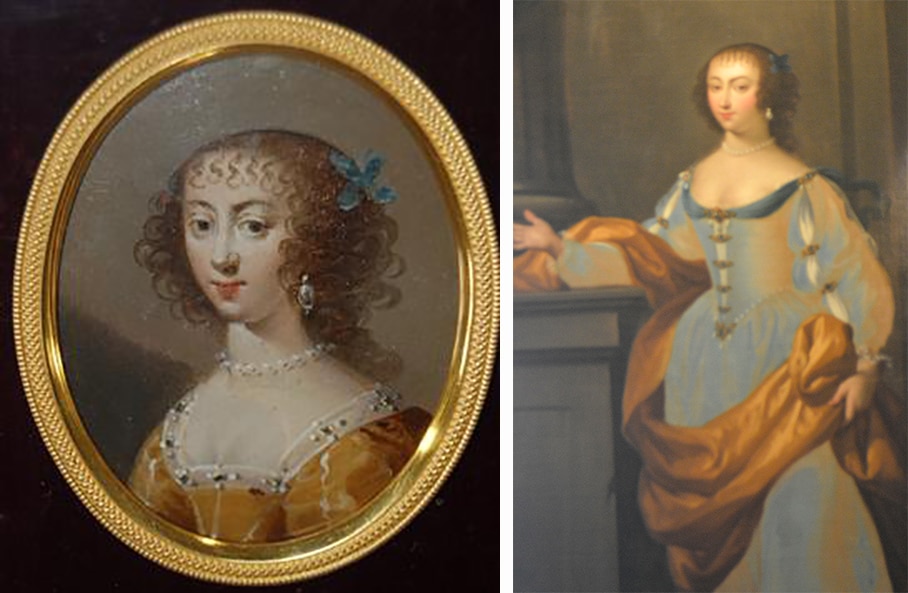
Mary Rouse – Casali portrait (right) and the miniature (left) that inspired it.
Another portrait of Henry Coke painted by a German artist in c.1740 is identical to the head and dress used by Casali. Though Henry Coke certainly wasn’t alive in 1740, it is possible that it was either based on an earlier miniature now lost, or that Casali though the image to be much older.
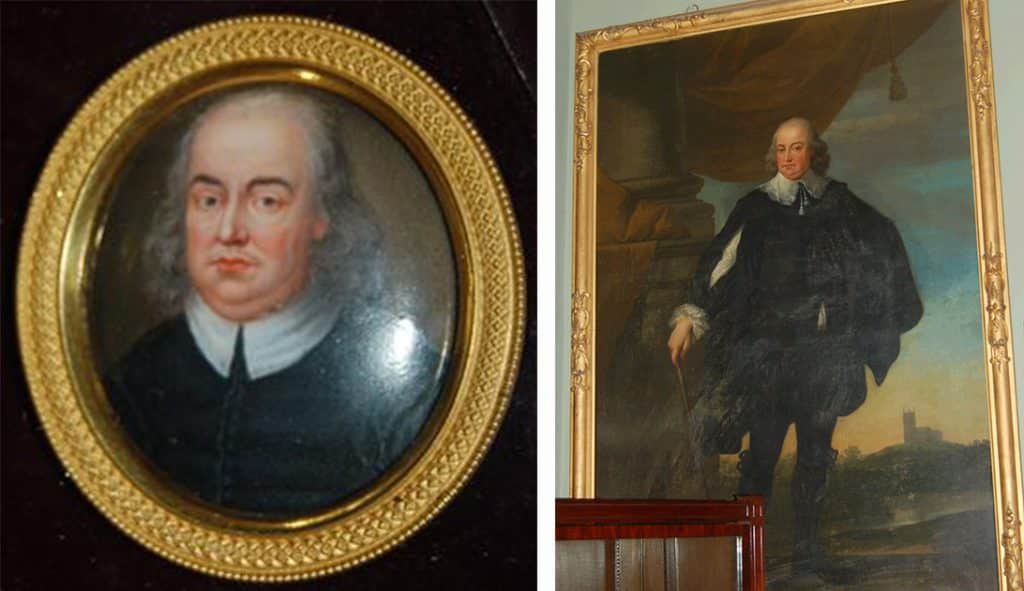
Henry Coke’s miniature and portrait
A third miniature, tentatively identified as Richard Coke, bears a little resemblance to the Casali works, though there are some marked differences in characteristics.
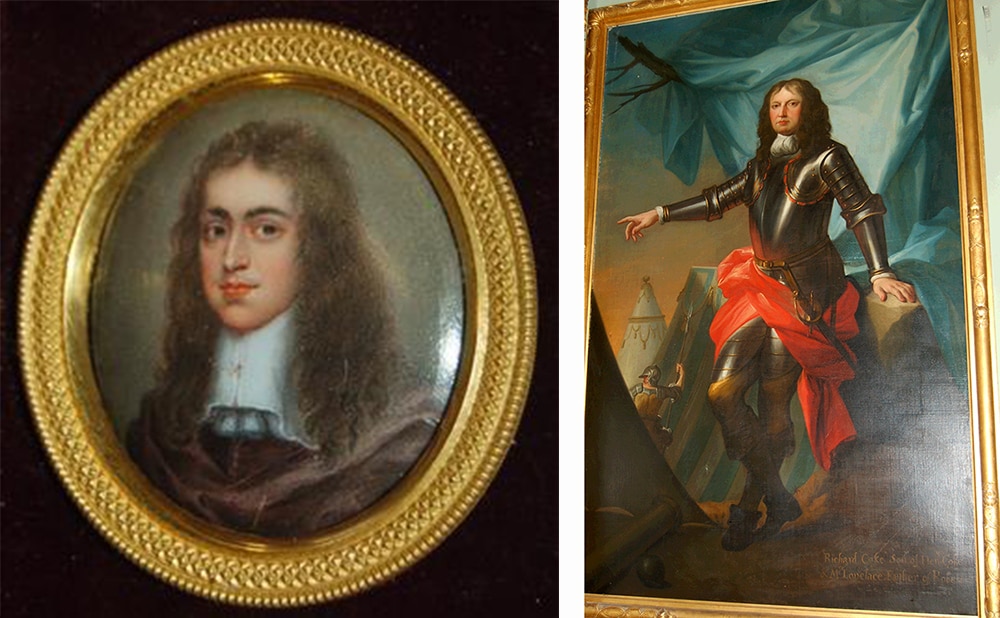
Richard Coke’s miniature and resulting portrait
However, for many of the works, Casali simply dreamt up the composition! It is especially interesting to look at his treatment of the backgrounds, for which he had to invent for every work. The background to the portrait of Richard Coke is particularly inventive – depicting the cleanest army camp ever seen – in reference to his support of the Royalists during the Civil War.
The commission was one of the largest Casali executed, and today the Holkham collection of Casali’s remains one of the largest in private hands.
View all latest blog posts here.
